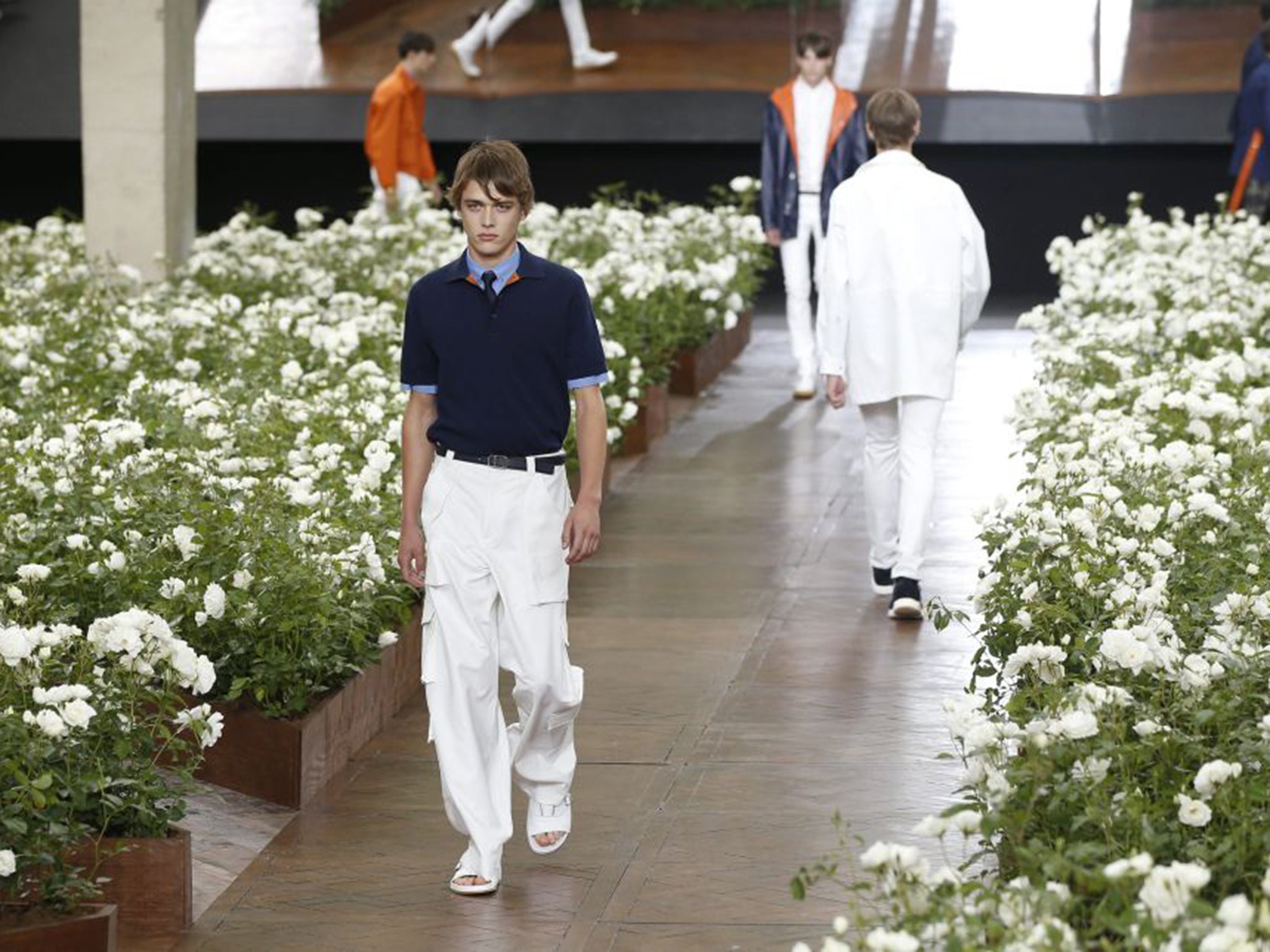Paris Fashion Week: Christian Dior and Balmain bring Argyle knits and embroidery for blokes
Two fundamentally different fashion houses reimagine themselves

It’s easy to dress a girl in men’s clothes - but putting a bloke in a frock? That’s far more difficult. It’s also less widespread.
Yet, in a metaphorical sense, that’s what a duo of houses have done in the final 48 hours of the Paris fashion week schedule: Christian Dior and Balmain. Each was originally established as haute couture houses, purveyors of hand-made, individually-fitted clothes to a tight-knit cadre of extraordinary rich women: and each has subsequently carved out a sizeable niche in the booming global menswear market.
Kris Van Assche’s challenge at Dior is - and always has been - how to reimagine a fundamentally feminine house in a masculine idiom. He’s not the type to dress men in skirts or blouses either, which would make everything far easier. Before the show, Van Assche said that his man for spring was “a bit 16th,” referring to the wealthiest of Paris’ arrondissement. It’s almost where the Dior headquarters sit, in their cushty, concrete-curlicued townhouse on the Avenue Montaigne; and it’s definitely where its customers are.
Bourgeois was the watchword - if that theme doesn’t exactly strike you as revolutionary for Dior, it at least feels fitting. What Van Assche wants to do is widen that rich remit - and, ultimately, sell more clothes. So, rather than just suits (as he offered for winter), this collection thought about bourgeois boys [italics]dans le weekend[italics]. What Van Assche wants to sell them is a mashed-up mix of menswear “codes” - camouflage (“almost the new denim,” said Van Assche), argyle knits, and navy MA-1 jackets with their signature lurid hazmat orange lining. That colour contrast was used in voile suiting, coats, or with lining seemingly flipped inside-out: a crocodile blouson looked like a fat satsuma. “Menswear is full of rules,” commented Van Assche, of those adhered-to traditions. “The more limited you are, the more you want to push.”
Are there limitations at Dior? Not of budget, but probably of the need to appeal to a swathe of customers across the world. That’s the burden and benefit of working for one of fashion’s behemoths. The last model exited in a bomber jacket patched with embroidered badges depicting roses, one of Christian Dior’s favourite flowers and an idea he based his female silhouettes on. He was Van Assche’s “bride,” the masculine equivalent of the outfit that traditionally closes an haute couture presentation. I’d call that pushing it.
Balmain’s Olivier Rousteing was showing menswear on the catwalk for the first time, after a few seasons of showroom presentations and healthy sales (I heard whisper than menswear makes up 40 percent of the house’s turnover). “A lot of men ask for the womenswear pieces,” Rousteing confided when talking about that menswear, which makes send of the women walking amongst a phalanx of models the designer frequently dubs his “army.” It’s difficult which of Rousteing’s soldiers were most decorated. There’s certainly no sexual discrimination here.
In Pictures: Spring/Summer 2016 menswear collections
Show all 40“Women are what I would be,” Rousteing once told me, “and man is actually what I am. So when I create the clothes I create it for me.” It actually make sense with Rousteing, who is his own best model, chomping the inside of his cheeks hard and smouldering as he takes his bow on the catwalk - or snaps a self-portrait on his iPhone, which happens far more frequently. And his clothes make sense too. There was a staggering breadth to what he showed for spring. If not of vision, nor invention, then certainly of shoulder, in the Antonio Lopez mould, and of technique, in the haute couture tradition. Macrame knotting, embroidery, leatherwork and studding were combined, frequently in single garments, never mind outfits. The whole was coloured tawny, rich shades of brown, like fine cognac, foie gras, the sand of Bahamian beaches, or the permatanned flesh of Kris Jenner, who sat front row in a Balmain jacket as gaudy as a Christmas tree.
Like the attire of Ms Jenner, the collection occasionally hung heavy with effort. Models’ muscles strained under the weight of embroidery and beading, hardware-laden knapsacks or draped fabrics. The women, in their lavishly embellished dresses, weren’t given an easier ride. But - and it’s a big but (an unfortunate side-effect of all those techniques verging on your posterior also, but I digress) - at least Rousteing was trying.
Subscribe to Independent Premium to bookmark this article
Want to bookmark your favourite articles and stories to read or reference later? Start your Independent Premium subscription today.

Join our commenting forum
Join thought-provoking conversations, follow other Independent readers and see their replies